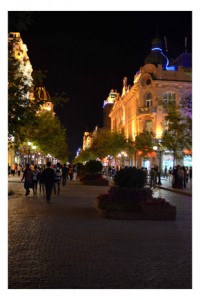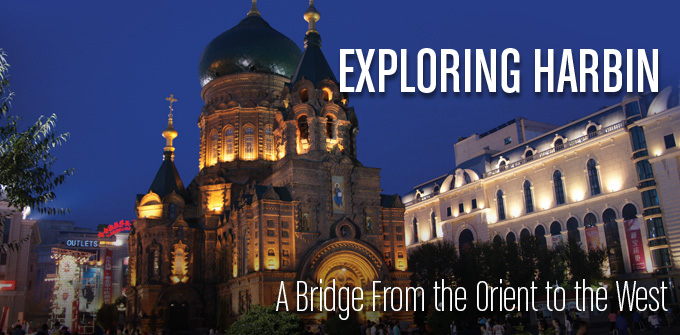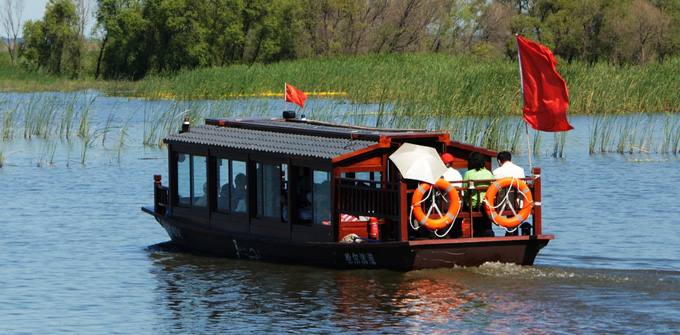A Bridge From the Orient to the West
A mere 90 minute flight from Beijing, Harbin may be the biggest city you have never heard of. Known locally as the “Paris of the Orient” the former Russian outpost on the East China Railway is, like most of China, undergoing rapid transformation.
Landing at the provincial airport visitors would never know Harbin is the capital of Heilongjiang province, and home to some 10 million people, until you drive down the road that is, and the skyline of gleaming tower blocks comes into view: Harbin is clearly a city on the way up.
“We will definitely build Harbin into a strong micro-city,” local Mayor Lin Duo told Tokyo Weekender. “Compared with Shanghai and Beijing, Harbin has been lagging behind—we are just discovering the potential of our city.”
Harbin has been lagging behind—we are just discovering the potential of our city.”
Duo is determined to put Harbin firmly on the map as a tourist destination and a city to invest in. The colorful history of Harbin can be seen in the old architecture of the town center, St. Sophia’s cathedral, a red-brick Orthodox church and the largest in the Far East, stands proudly in a newly renovated piazza.
The iconic green dome is a local landmark and has become a symbol of the city that has stood since 1908. Walking along the 1.45-kilometer-long cobble stone Zhongyang street is a world away the dust and noise of Beijing and at a glance could be mistaken for a miniature Champs-Élysées (where the Paris moniker comes from). Duo says his goal is to regenerate the European style buildings and “make the city more beautiful.”
Old Harbin: At one point Harbin had more foreign residents than Chinese, including a large Russian population and Jews fleeing Europe. These migrants found a home in what is now the city’s Baroque Quarter, a quaint collection of century-old houses built around stone courtyards, that once also housed Chinese merchants and even occupying Japanese soldiers.
The courtyards reflect much of the city’s character: European on the surface and Chinese underneath. The whole Baroque area is undergoing renovation and local party-officials have big plans in the works.
“Our goal is to protect and preserve the block,” says Gai Zhuang, director of the restoration project. “But we also want to introduce modern business into the area.” Zhuang is not kidding, recently an IMAX theatre opened and the unmistakeable golden arches of McDonalds can be seen on architects sketches.
Water City: A vast civil engineering project dubbed “Water City” is transforming the 578 square KM natural wetlands North of the Songhua river into a vast irrigation and flood protection area.
After devastating floods in 1998, the local government are pumping 28.9 billion Yuan (4.3 billion US dollars) into projects to defend the city from climate change and develop a more sustainable development model, that will serve dual roles of protecting the local environment and attracting tourism and investment from abroad.
The Sun Island wetlands are also home to hundreds of species of birds and fish and have become one of China’s most popular summer destinations in their own right.
Extreme Cold: Visiting this part of China during the summer or autumn is cool and relaxing compared with Tokyo but everyone in the city insists, to see the best of Harbin, “you must come back in winter.”
In January the water city turns into the “Ice City” as temperatures drop to as low as minus 40 degrees C. The waterways and rivers freeze and the city becomes host to the spectacular Harbin Ice and Snow Festival— similar to Sapporo’s Yuki Matsuri but on a much larger scale.
In 2007, the festival set a Guinness World Record for the largest snow sculpture. If you have ever wanted to explore a miniature Forbidden Palace, or have your photo taken next to a giant Ice statue of Chairman Mao now is your chance.
Opening to the West: As more people look to China for tourism and investment opportunities Harbin offers something unique: a historic bridge from the Orient to the West.
A number of foreign companies are already calling Harbin home including high-tech start-ups taking advantage of the natural cold to build a cloud computing hub, an business that is notoriously power hungry.
Aviation is another major industry putting the city on the world map. Toulouse based Airbus have recently opened a factory manufacturing composite parts for the A350—the rival plane to Boeing’s recently unveiled 787 Dreamliner.
With all this development Mayor Duo is a busy man; five subway lines, new roads and an ongoing industrial development project are all in the pipeline.
“My schedule is very busy,” he says with a smile “We are working hard but I don’t feel stressed—when I look outside the beautiful scenery makes me forget my headaches.”










